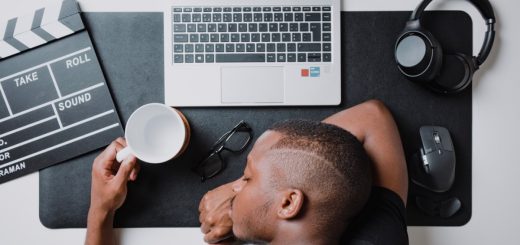6 Practical Ways to Practice Being Present
By Leo Babauta
There are a lot of amazing benefits to being more present and mindful, but one of my favorites is this: you’re not missing the beauty and joy of the present moment.
Being present also helps you to see when you are feeling fear or resistance, uncertainty or the urge to procrastinate, anger or resentment … and then to work with those difficulties mindfully.
That’s all great, but how do you remember to practice being present? It’s so easy to get caught up in our thoughts and distractions, and forget to practice.
The honest truth is that no one is perfect at this. Me least of all. It’s a continual learning process, not something you figure out and then you’re good. It’s messy and beautiful.
So with that in mind, here are some practical ways to practice:
- A Small Regular Practice. Form the simple habit of meditating for just two minutes a day (to start with). After you wake up, simply sit comfortably and try to focus on your breath for two minutes. When (not if) your mind wanders, just notice it and label it “thinking.” And gently return to the breath, without harshness. Set a timer, and when the timer goes off, you’re done! If you feel like expanding it by a minute every week or so, feel free to do so, but you don’t have to expand. The benefit of this regular practice is that you learn skills you can take and practice in other parts of your day.
- Work with Others. Having a regular group or partner to meditate with is helpful. You support each other continuing to practice, and can talk about struggles and things you’re learning. If you don’t have a practice group in your area, you could find people online to talk to regularly about practicing.
- Have Mindfulness Bells. You could have a chime regularly sound off on your phone or computer (numerous apps do this) to remind you to pause and be mindful of what’s going on right now. I’ve also found it useful to see other things as mindfulness bells: seeing my child’s face, a traffic light, hearing an alert from an appliance or the computer. Each of these can be a reminder to be present when I notice them.
- Set an Intention Before an Activity. If you’re about to do a work task, process email, read a book, cook dinner … you can pause just before starting, and think for a second about what your intention for that activity might be. What are you hoping to do with this activity? For me, I might cook dinner out of love for my family or myself. I might write a blog post (like this one) out of love for my readers. I might do a workout out of love for myself (and to set a good example for my kids). I process email out of responsibility and consideration for those trying to communicate with me. By setting an intention, it reminds you to be mindful of that intention as you do any activity.
- Reflect Daily. At the end of each day, or at the beginning, take a minute to journal or just reflect on how your day has gone. How have you done with practicing being present? What have you struggled with? Have you been using your mindfulness bells and setting intentions? What resistance has come up for you, what stories are you telling yourself about all of this? Daily reflection is one of the most useful habits for continuing to practice and getting better at practicing.
- See Everything as a Teacher. This method admittedly sounds a bit corny, but it’s actually amazing. When you’re feeling frustrated with someone, feeling stressed out by work, feeling upset or grieving about the health of a loved one, feeling anxious about a national election … pause and see this person or situation as a teacher. What can you learn from them about being present? What attachments can you see in yourself that are causing this difficulty? What stories are you forming that are causing you to feel this way? What can you practice letting go of? What can you appreciate about this moment that you are taking for granted? In this way, every difficulty, every person, everything that arises in the present moment can be a loving teacher that is helping us along the path to being present.
Mindfulness for Beginner’s ebook
If you’d like help with mindfulness, check out my new Zen Habits Beginner’s Guide to Mindfulness short ebook.

